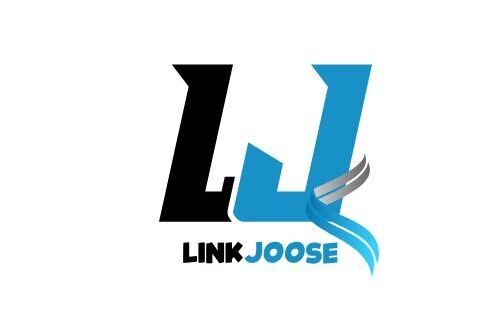Introduction:
Business Driven Information Systems:
The role of information systems has changed in a highly competitive business environment, from being tools of mere data processing to becoming strategic business assets for the creation of successful business organizations. Business-driven information systems enhance decision-making, optimize operations, and align technology with corporate goals. During the effective application of these systems to gain competitive advantages, organizations experience increased efficiencies, reduced costs, and improved customer satisfaction.
This article provides a deep investigation into business-driven information systems, their components, advantages, challenges, and future trends. By the end of this guide, you will be aware of how the importance of these systems in the lives of modern enterprises can be harnessed to ensure sustained growth and innovation.
What Are Business Driven Information Systems?
A business-driven information system is a framework to supersede organizational strategic objectives by integrating technology, data, and processes into one coherent system. Business-driven information systems differ from traditional IT systems that focus on technical efficiency. Such systems consider all business processes and allow such companies:
To align their IT investments with business objectives.
To improve decision-making by analyzing real-time data.
To augment customer experience based on data-driven insights.
For mapping out operations and increasing automation.
To reduce costs and optimize resources.
These systems cover different technology solutions, including SAP, CRM, data analytics, AI, cloud technology, and cybersecurity frameworks.
Crucial Elements of Business Driven Information Systems
Entailed herein, to comprehend the impact that really business driven information systems can have, it is essential to explore their core components:
1. Data Management and Analytics
Data is the very lifeblood of any organization. These internal-most elements of business driven information systems will enable the organization to do the following:
Efficiently store and retrieve structured and unstructured data.
Use data analytics to identify patterns, trends, and new business opportunities.
Enhance decision-making through predictive analytics and AI insights.
2. Enterprise Resource Planning (ERP)
ERP systems that incorporate various business functions such as finance, human resources, procurement, and supply chain management. An effectively implemented ERP system ultimately helps businesses:
Enhance collaboration and coordination across departments.
Reduce redundant processes and streamline workflows.
Improve financial forecasting and resource planning.
3. Customer Relationship Management (CRM)
CRM software enables companies to manage customer interactions and relationships efficiently. With a business-driven information system, organizations can:
Enhance customer experience with AI-driven recommendations.
Automate the customer support and service functions.
Improve customer retention and brand loyalty through targeted engagement strategies.
4.With AI-based and ML-driven business information systems, one can:
.Intelligently automate the mundane tasks.
.Detect frauds and manage risks in real time.
.Make informed decisions based on insights derived from data.
5. Cloud Computing and IT Infrastructure
Current business focused information systems have gone mostly cloud-based:
Scalability according to business growth.
Cost effectiveness via reduced dependence on physical hardware.
Remote accessibility that supports collaboration among a globally located workforce.
6. Cybersecurity and Compliance
Increased cyber threat makes cybersecurity a predominant ingredient into information systems that drive businesses. Such systems will therefore have:
Advanced encryption techniques for protecting sensitive data
Compliance management tools to ensure conformance to regulatory requirements in the industry
Civilized AI security measures to detect and mitigate cyber risk.
Advantages of Business Driven Information Systems
1.Increased Decision-Making Power
Offering real-time access to accurate data, these systems empower business leaders to make informed decisions in a timely fashion. Predictive analytics help anticipate market trends and customer behaviors.
2.Operational Efficiency and Automation
Automation reduces manual work, increasing speed while minimizing errors. Be it automated invoicing, inventory tracking, or AI-powered customer assistance, business-driven information systems increase the efficiency of all functions.
3.To secure cost savings and maximize return on investment
The implementation of a business-driven information system helps businesses avoid redundancy, optimally usage of resources, and minimize operational costs, thereby increasing profitability.
4. Competitive Advantage
Using such an advanced business-driven information system is a factor that offers a competitive edge to companies in:
Delivering superior experiences to customers.
Faster adaptability to market changes.
Better products and service innovations.
5. Scalability and Adaptability
Technological requirements of a growing business change. A well-functioning business-driven information system will remain scalable and adaptable to new market conditions and customer demands.
Challenges in introducing business driven information systems
In spite of all their advantages, putting up business driven information systems helps bear a lot of challenges:
1. Huge Initial Costs
A lot of software, infrastructure, and people-training costs are required for the actual development and deployment of
these systems.
2. Resistance to Change
The employees and management may be resistant to new systems, as it sets off an unfamiliar or frightful transition to being replaced by new technology.
3. Integration Complexities
Linking new systems with existing infrastructure and achieving a seamless cohesive integration of new systems across departments may not always be a cakewalk.
Challenges in Implementing Business Driven Information Systems
However, the above advantages are accompanied by some challenges in implementing business-driven information systems. They are as follows:
1. Initial Investment is High
The system development and installation require considerably large investments in software, set up, and training of personnel.
2. Resistance to Change
Employees and managers may not want to change to the new system because of unfamiliarity or fear of losing jobs.
3. Complexities in Integration
New systems will probably be more difficult to link to current infrastructure and will most likely prevent a seamless cohesive integration across departments.
The above advantages are faced with several challenges in implementing business-driven information systems. Of these challenges,
1. High Initial Investment
The system development and installation require significantly large investment in software, setup installation, and training of personnel.
2. Resistance to Change
Employees and managers are resistant to change systems as it leads to unknown and sometimes frightening transitions of being replaced by new technology.
3. Complexities in Integration
New systems will probably be more difficult to link to current infrastructure and will most likely prevent seamless cohesive integration across departments.
4. Cybersecurity Risks
With data being available to more people than ever before, organizations are compelled to beef up their security measures to avert data breaches and cyber threats.
5. Regulatory Compliance
Finance and healthcare industries have to comply with strict regulatory requirements, which naturally makes the implementation of any system even more involved.
Future Trends in Business Driven Information Systems
1. AI-Powered Decision Making
AI is to keep revolutionizing these systems for business driven information with predictive analytics, automated processes, and intelligent decision-making.
2. Blockchain for Data Security
In addition, tamper-proof and clear records for businesses were expected to be provided through blockchain technology for enhanced security of data.
3. Internet of Things (IoT) Integration
IoT devices will have an important role to play in business-driven information systems by providing the real-time data from connected devices to enhance efficiency.
4. Cloud-Based Systems to Become More Prominent
Cloud computing will prevail, providing cost-effective, scalable, and highly secure solutions to businesses the world over.
5. Focus on Green IT Solutions
Businesses will pay increased attention to sustainable IT solutions with a view toward reducing carbon footprint by employing energy-efficient infrastructure and data centers.
Three FAQs about Business Driven Information Systems:
1. What is business driven information system?
A business driven information system is a technology framework that is intended to align the business goals with the IT infrastructure. Organizations can modernize the businesses and improve their overall decision making through integrating the investments into technology advancements that enable organizations to fully optimize operations and gain competitive advantages. Real-time analytics, broadened automation, and better interdepartmental collaboration are just a few of the offerings of such systems that empower businesses to quickly respond to market changes and operational hazards.
2. How do business driven information systems benefit an organization?
Business driven information systems benefits as to different aspects such as making work more efficient, reducing operational costs, and expanding data powered decision making. With data analytics such as AI-enabled insights and cloud computing, organizations can streamline workflows and eliminate redundancies as well as further improve customer experiences. Another benefit these systems extend to organizations is that of risk management: foreseeing and flagging potential threats or vulnerabilities ensures business continuity and compliance with industry regulations.
These business driven information systems are some examples of other benefits they provide in terms of improved efficiency, lower operational costs, and expanded data powered decision-making. They streamline processes and minimize redundancy by using data analytics and AI-powered insights in conjunction with cloud computing; improving experiences for customers. Another area in which these systems add benefits to organizations is that of risk management: predicting and flagging potential threats or vulnerabilities to ensure business continuity and compliance with industry regulations.
3.What comprises business oriented information systems?
The key elements of business driven information systems include:
Data Management and Analytics: This is the means through which businesses can collect, store and analyze data, and utilize the data when making decisions to promote their business.
Enterprise Resource Planning (ERP): Functioning as a whole, it puts together complete sets of business systems, finance, human resource and supply chain.
Customer Relationship Management (CRM): With this service, an organization is enabled to carry out interaction with customers more efficiently in terms of approach to customer engagement, and delivery.
Artificial Intelligence (AI) and Machine Learning (ML): Employs alternatives that lead to automation, predictability of events, and rational behavior.
Cloud Computing: This provides access via the Internet to applications and storage for the business which are in a shared environment yet are scalable, inexpensive, and secure.
Cybersecurity Measures: Data protection, compliance, and availability of security against cyber threats.
4. Which businesses implement information systems driven by business considerations?
A few examples of industries that make significant use of business driven information systems include:
Finance: Business Driven Information Systems make online transactions secure, detect fraud, and help forecast future cash flows.
Health: Business Driven Information Systems facilitate management of patient records, diagnosis, and personalizing treatment plans.
Retail: Buzzes up to customer’s satisfaction, inventory management, and targeted marketing.
Manufacturing: Business Driven Information Systems improve logistics in the supply chain, automation, quality control and among other aspects.
Logistics and Transportation: Business Driven Information Systems streamline fleet tracking and route optimization, warehouse management and others.
Technology and IT: These drive processes in software development, IT security, and enterprise networking.
5. What are the issues in establishing business-driven information systems?
Challenges experienced by organizations include the following:
High Implementation Cost: High initial investment in software, hardware, and training is required.
Integration Difficulty: Ensure that continuous processes use incorporation with existing systems and the related processes.
Cybersecurity Liability: Expose sensitive business information to breaches and cyber-attacks.
Resistance to Change: Employees find adopting new technology and processes challenging.
6. How AI impacts business driven information systems?
Artificial intelligence is recognized for enhancing the performance of business driven information systems through the automation of repetitive tasks, decision making, and workflow optimization. The next generation of business AI-enabled solutions includes chatbots, recommendation engines, fraud detection systems, and prescriptive analytics, enabling organizations to offer enhanced customer services, improved productivity, and trend identification for the future.
7. In what manner does the cloud actually improve today’s business-driven information systems?
This question would best be answered by:
The cloud allows businesses to subscribe to access real time data, applications, and solutions to storage from anywhere: thus increasing their possibilities in the area of collaboration and flexibility. It makes the on-site, expensive infrastructure redundant, makes it possible for scalability, and saves on costs.
8. What role does cyber security play in business driven information systems?
All the above show that cyber security is part of business driven information systems. It does not allow searches into the critical data assets, such as high-value financial transactions or intellectual property generated by the firm within its operations, to celebrate being compromised by cyber threats. The suggestion of encryption, multi-factor authentication, and AI-driven threat detection systems makes for a strong business continuum along with compliance.
9. Overcoming Challenges in Implementing These Systems by Businesses?
On the other hand, to successfully implement business driven information systems, organizations should:
Train employees and change management programs.
Deploy IT professionals with a wealth of knowledge and experience to enable seamless integration of the system.
Prioritize cybersecurity measures for data protection and breach prevention.
Choose those which can be scaled and customized according to business objectives.
Continuously update and optimize system functionalities for better performance.
10. Future Trends in Business Driven Information Systems?
The emergence of advanced technologies will lend immense touch to the likes of business driven information systems that underscored things like:
Being AI-Powered automated smart operations and intelligent decision-making with improved operational efficiency.
With Blockchain Technology came added security and transparency in the world of financial transactions and data management.
The IoT concept had it all; the interconnectivity of devices and systems for real-time monitoring and optimization.
Augmented Reality (AR) and Virtual Reality (VR) are about creatively changing customer experiences and training programs.
Sustainable IT Solutions partner in reducing environmental impact, such as through energy-efficient computing and green data centers.
Conclusion
Business driven information systems have changed the course of functioning for organizations by allowing them to use technology for better productivity, greater customer involvement, and supported decision-making. These systems combine various technological components, such as artificial intelligence, cloud computing, data analytics, and cybersecurity, to improve business functions and sustain market growth.
The use of business driven information systems not only keeps businesses in step with increasing competition in a digital marketplace. Implementation of such systems enables data-oriented strategies that can analyze customer behavior, therefore helping organizations in the optimization of the supply chain and the automation of mundane manual work. These new systems enhance productivity, reduce operational costs, and improve overall performance, which would be beneficial to the business in the long run.
Organizations will face several challenges, such as high implementation costs, cybersecurity threats, and resistance to change. Also, it has a high chance of failure, but with proper planning, training investment, and help from IT experts, an organization may successfully integrate and utilize its systems.
The future for business driven information systems will be marked by constant improvements in AI, machine learning, and blockchain technology. Companies that adopt custom solutions based on these technologies will be best placed to negotiate shifts in the market mirrored by changes in security and superior customer experience. As industries change, business driven information systems will remain pivotal for growth, innovation, and long-term success.
As they continue down the road of digital transformation, the adoption and optimization of business driven information systems will become a defining factor for competitiveness. Firms that strategically deploy technology, leverage data analytics, and use automation will negotiate interruptions in their industry and cement their place in an increasingly interconnected and fast-paced global economy.














